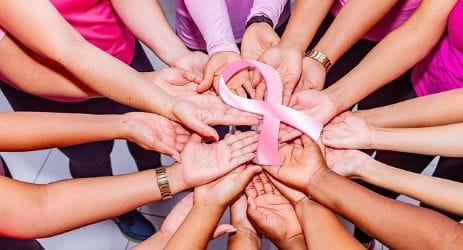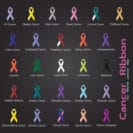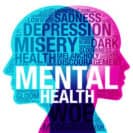Chances are, like most people, you know of a family member, friend, or aquantence diagnosed with breast cancer. From my personal experience, my mother-in-law is a breast cancer survivor; I also have an acquaintance who, unfortunately, did not survive.
This post explores the importance of breast cancer screening testing by highlighting early detection, improved survival rates, and personalized risk assessment. We hope this information inspires individuals to take control of their breast health and make informed decisions to save lives.
Early Detection Matters
It may go without saying, but one of the fundamental ideas in the fight against breast cancer is early detection. It’s no exaggeration to say that early detection can save lives. When breast cancer is diagnosed at an early stage, treatment options are much more effective, and the chances of a successful outcome are considerably higher.
Don’t underestimate the significance of breast cancer screening—it could very well be the key to a longer, healthier life. With advancements in the medical field, early detection can make all the difference in the world.
The number one thing you could do for yourself and those you care about would be to prioritize regular screenings, take charge of your breast health, and beat the odds.
Breast Cancer Diagnostic Procedures
The good news is there is a wide range of methods for breast cancer screening, each designed to detect the disease at different stages. Today’s three most common screening tools are clinical breast exams, mammograms, and ultrasound.
Clinical Breast Exams: Clinical breast exams are performed by a healthcare professional. The breast exams involve a thorough physical examination of the breast. Your healthcare provider can detect lumps or abnormalities that may suggest cancer through touch and expertise. These exams provide an essential complementary layer of screening.
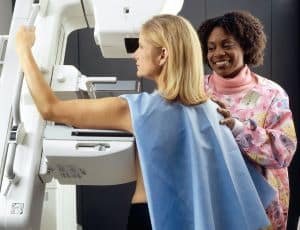 Mammograms: We’ve all heard the term, but if you’re not aware, Mammography is a procedure utilizing low-dose X-ray images of the breast tissue. It often identifies breast cancer or subtle breast tissue changes, including very small tumors that are too small to be felt during a clinical or self-examination, long before symptoms are apparent.
Mammograms: We’ve all heard the term, but if you’re not aware, Mammography is a procedure utilizing low-dose X-ray images of the breast tissue. It often identifies breast cancer or subtle breast tissue changes, including very small tumors that are too small to be felt during a clinical or self-examination, long before symptoms are apparent.
For many years, 2D screening mammography was the conventional method. Today, 3D mammography, also known as digital breast tomosynthesis, has become the predominant choice for breast imaging due to its enhanced accuracy in detecting breast cancer.
It proves particularly effective for women with dense breast tissue and diminishes the necessity for subsequent screenings.
For more information visit:
National Breast Cancer Foundation and Mayo Clinic
Breast Ultrasound: Most of us have had an ultrasound somewhere along the line. Ultrasounds are typically used to complement a mammogram. Should a tumor be detected, your doctor will use ultrasound to pinpoint the position of the cancer; this guides the doctor to the exact position to insert a needle during a biopsy.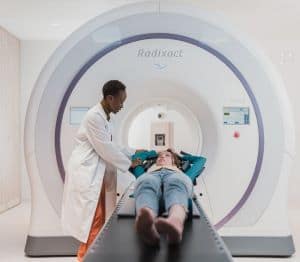 Magnetic Resonance Imaging (MRI):
Magnetic Resonance Imaging (MRI):
Breast MRIs are often used alongside mammograms, particularly for women with an increased risk of breast cancer or those with dense breast tissue. In addition, if your initial breast screening results are inconclusive, your physician may recommend an MRI to obtain a more detailed assessment.
Improved Survival Rates: Regular breast cancer screening can significantly improve survival rates. When cancer is diagnosed at an early stage, the chances of successful treatment and long-term survival are much higher.
The American Cancer Society (ACS) has reported a continuous decline in breast cancer death rates since 1989, reaching an impressive 43% overall reduction by 2020.
The ACS attributes this decline in mortality to several factors including; the earlier detection of breast cancer through screenings, heightened awareness of the disease, and improved treatment options.
Understanding Your Breast Cancer Risk Factors

Women who have close relatives with a prior history of breast cancer are at a heightened risk of developing the condition. If you have one female relative (sister, mother, daughter) diagnosed with breast cancer, your risk doubles.
In addition, if two first-degree relatives have a breast cancer diagnosis, your risk climbs to 5 times higher than the average population.
While the exact degree of risk remains uncertain for those with a brother or father diagnosed with breast cancer, there is an elevated risk associated with such cases. Researchers have yet to determine the exact magnitude of this increased risk.
In certain instances, a family with a substantial history of breast cancer can be attributed to an abnormal gene associated with a significantly heightened breast cancer risk, such as the BRCA1 or BRCA2 gene. In other cases, the abnormal CHEK2 gene may contribute to the development of breast cancer.
For more information visit breastcancer.org
In Conclusion
In the ongoing fight against breast cancer, embracing the advantages of early detection improved survival rates, and personalized risk assessment, individuals can confidently navigate their health journeys. We hope that individuals are empowered to make informed decisions, ultimately reshaping the landscape of breast health.
Together, we are rewriting the history of breast cancer, transforming it from a challenging opponent into a battle we can face head-on, armed with knowledge, courage, and hope.
